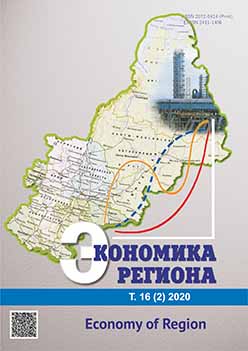РАЗВИТИЕ ПРОДОВОЛЬСТВЕННОЙ ВНЕШНЕЙ ТОРГОВЛИ ГОСУДАРСТВ ПОСТСОВЕТСКОГО ПРОСТРАНСТВА
Development of Agricultural Foreign Trade in the Post-Soviet Countries
Author(s): Valentina Petrovna Neganova, Yuriy Fedorovich ChistyakovSubject(s): Economy
Published by: Институт экономики Уральского отделения Российской академии наук
Keywords: agricultural foreign trade; economic cyclicality; cycles in foreign trade; long cycles; foreign trade risks; agricultural foreign trade of Russia; agricultural foreign trade of Ukraine
Summary/Abstract: For a long time, the post-Soviet countries that include former republics of the Soviet Union have played an important role in the world food market. Currently, a number of countries in the region are the world’s leading exporters of agricultural raw materials, in particular, grain production, while others are the major importers of food. The study aims to examine agricultural foreign trade in the post-Soviet region and analyse the changes in the food exports and imports of the individual countries and the region as a whole. This analysis can help to predict the socio-economic development of the large post-Soviet countries, such as Russia, Ukraine, Belarus, and Kazakhstan. In order to study the characteristics of food export, we used an integral indicator of grain units, as it more accurately indicates the long-term changes in the agricultural exports and imports compared to traditional assessments. We applied the indicator to large data sets on the export and import of major agricultural products in the countries collected for a long time. As a result, we identified four development cycles of agricultural foreign trade in the region. Each of them lasts for 40–50 years and differs in the ratio of agricultural exports and imports. In the modern period that began in 2012, the exports of agricultural products prevail over the imports. The study shows that if the current export development trends continue, the region will create the largest export area with a total exceeding 100 million tons of agricultural products by 2035. The analysis of the changes in the total structure of foreign trade of the major exporting countries in the region demonstrates that a significant increase in agricultural export might further strengthen the raw materials export orientation of these countries. The study results can be used for developing and adjusting foreign trade and national agricultural policies in the post-Soviet region.
Journal: Экономика региона
- Issue Year: 16/2020
- Issue No: 2
- Page Range: 597-611
- Page Count: 15
- Language: Russian

